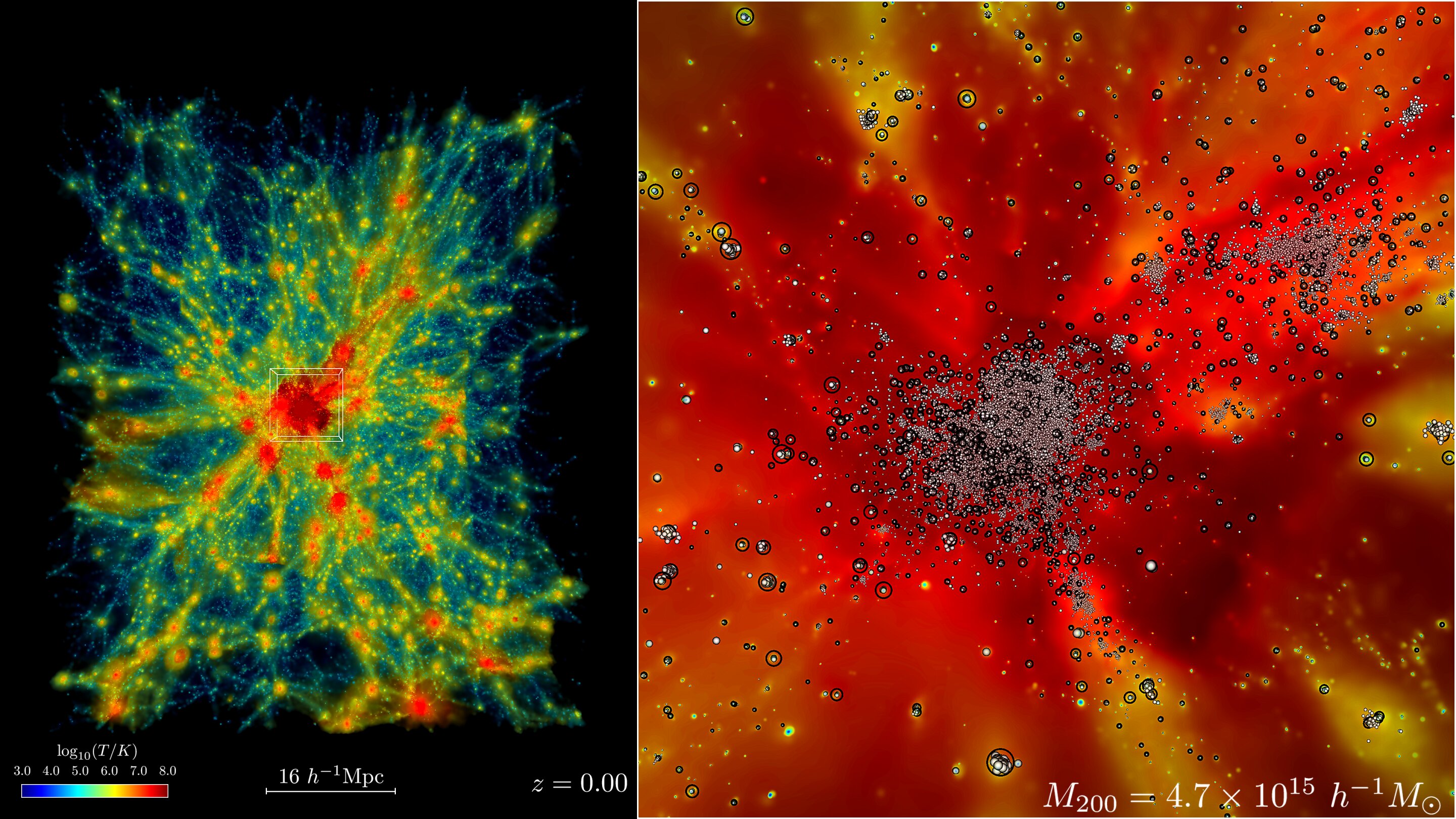Follow us on Google News (click on ☆)

The simulation shows the evolution of regions in the Universe containing immense galaxy clusters, with temperatures reaching several million degrees Kelvin.
Credit: Argonne National Laboratory, U.S. Dept of Energy
Using Frontier, located at Oak Ridge National Laboratory, the team set a record by simulating the evolution of gases, stars, and galaxies over billions of years. This achievement combines two fundamental aspects of physics: conventional matter and dark matter, with their gravitational interaction calculated on an unprecedented scale. The results allow for a direct comparison of these models with observations from giant telescopes such as the Rubin Observatory.
According to Salman Habib, project leader and director of computational sciences at Argonne, these cosmological simulations require modeling a "complete cocktail" of physical effects. This includes gravity, the dynamics of hot gases, and the formation of complex structures like black holes. Until recently, such simulations were out of reach due to the limitations of conventional computing.
To make this possible, the code employed, HACC (Hybrid Accelerated Cosmology Code), was extensively optimized. Initially designed for previous-generation supercomputers, it was revamped under the ExaSky project to leverage the power of modern GPUs. The result: a run 300 times faster than previous tests on Titan, the former champion of supercomputers.
Thanks to its 9,000 computing nodes and AMD Instinct MI250X processors, Frontier enabled the simulation of vast astronomical volumes, offering an ultra-detailed view of cosmic evolution. These simulations are not limited to size but also incorporate crucial physical details, such as the behavior of baryons and the influence of supermassive black holes.
Bronson Messer, scientific director of the Oak Ridge Leadership Computing Facility, emphasizes that this advancement is as much a technical feat as it is a scientific leap forward. It brings theoretical models closer to observed reality, opening new opportunities to analyze data from observatories.
The project also benefited from the infrastructure at Lawrence Berkeley and Argonne labs, where preliminary versions of HACC were tested. These efforts mark a significant step towards an era where digital simulations of the Universe rival the complexity of the real Universe.